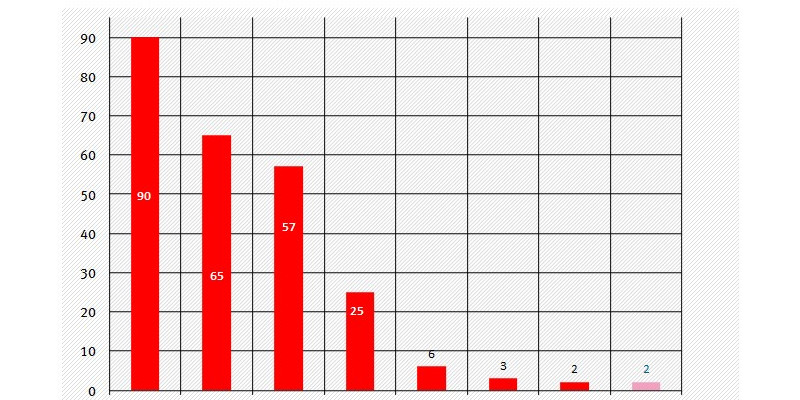Nitrogen dioxide: Three cities exceeded the NO2 limit value in 2021. That number is expected to fall to only two in 2022. Following evaluation of the data already available from the automated measuring stations, Munich is clearly above the limit value of 40 µg/m³ with an annual mean value of 49 µg/m³. Essen is also expected to exceed the limit value after final evaluation of the data from passive collectors. The data will go to a lab for analysis; final results will not be available until May. About three quarters of all measuring stations – especially in urban areas and cities – did not comply with the significantly stricter WHO guideline annual mean value of 10 µg/m³. A look at the mean concentration values shows a continued decline in 2022, although the mean annual average was only slightly below the 2021 value.
The main source of nitrogen oxides in urban areas is road traffic and diesel engine vehicles in particular. Measures to contain the coronavirus pandemic contributed to a decrease in NO2 concentrations in the most recent years. In the course of 2022, however, mobility behaviour gradually returned to normal. The decreases are therefore essentially due to a progressive renewal of the vehicle fleet. There are more and more significantly cleaner vehicles on the road in the cities such as lower-emissions buses.
Particulate matter: Compliance with the applicable limit values for particulate matter (PM10 and PM2.5) was achieved throughout Germany. However, 42 per cent of the measuring stations showed PM10 annual mean values above the WHO air quality guideline value. Almost all of the 200 or so stations (99.5%) exceeded the WHO guideline value for PM 2.5 (5 µg/m³). Mean particulate levels remained unchanged compared to the previous year. Dirk Messner said, “In its impact assessment on the proposal for the new Air Quality Directive, the EU Commission classifies air pollution as a significant health burden. The greatest threat is posed by unchanged, excessive concentrations of particulate matter, causing many premature deaths – about 28,000 in Germany and some 238,000 in the EU – and illnesses. The Commission's proposal for a new Air Quality Directive published in October 2022 therefore provides for significantly lower limit values for 2030. Germany welcomes the efforts to improve air quality and will continue to support this goal in the ongoing European negotiations.”
The main sources of PM load in urban areas and cities are road traffic (exhaust fumes and especially brake and tyre abrasion) as well as stoves and heaters in residential buildings. Power stations and district heating plants, metal and steel production as well as the handling of bulk goods are further sources. In addition, ammonia emissions from livestock farming in particular contribute to PM formation. However, particulate matter can also occur because of soil erosion or forest fires as well as through the dust transported from the Sahara.
Ozone: Ozone pollution in 2022 was somewhat average compared to previous years in terms of exceeding applicable target and threshold values, despite the summer heatwave. Nevertheless, the WHO guideline values for ozone were missed across the board (100%).
The increasing frequency of summer heat waves in Germany in recent years does not point to an increase in ozone peak concentrations, but average ozone pollution in cities is increasing. Combined with the increasing heat stress due to climate change, this is leading to a growing health problem for urban residents.
Ozone is not released directly but instead is formed from precursor substances by photochemical processes during intense solar radiation. Ozone precursors such as nitrogen oxides and volatile organic compounds originate mainly from man-made sources, such as road traffic, firing systems and the use of solvent-based products such as paints, varnishes, adhesives and cleaning agents. However, natural sources of volatile organic compounds, e.g. vapours from deciduous and coniferous trees, also contribute to ozone formation.
Accuracy of the data
Analysis is based on preliminary data from the air monitoring networks of the federal states and the German Environment Agency (last update: 31.01.2023). Final data will not be available until mid-2023 due to the extensive quality assurance carried out in the monitoring stations. However, the current data available allow a general assessment of the previous year's trend.
 Click to enlarge
Click to enlarge












